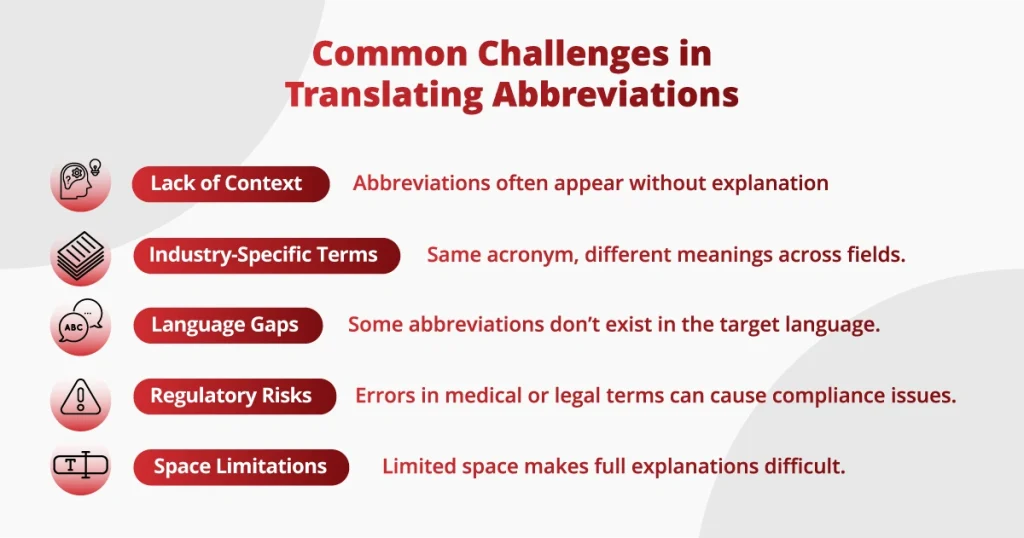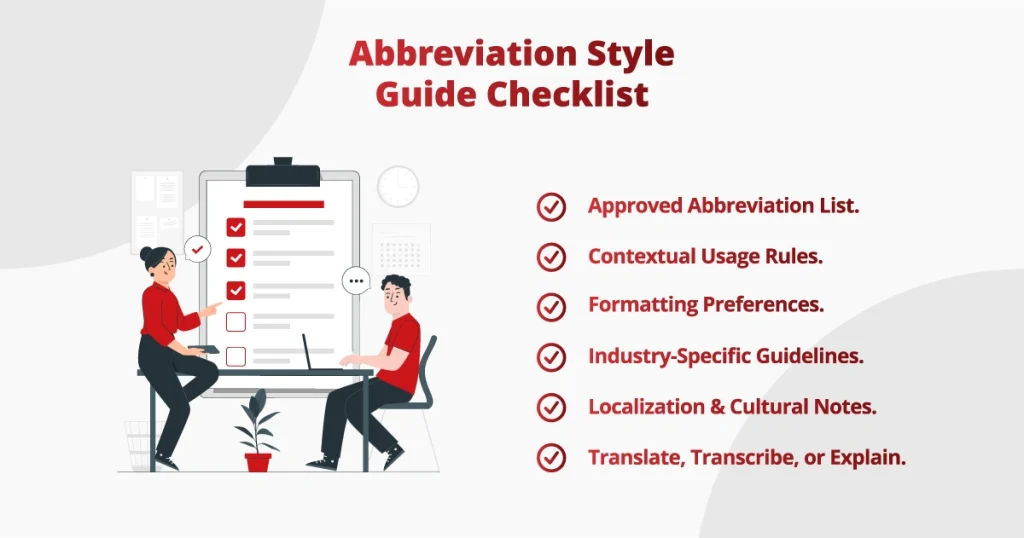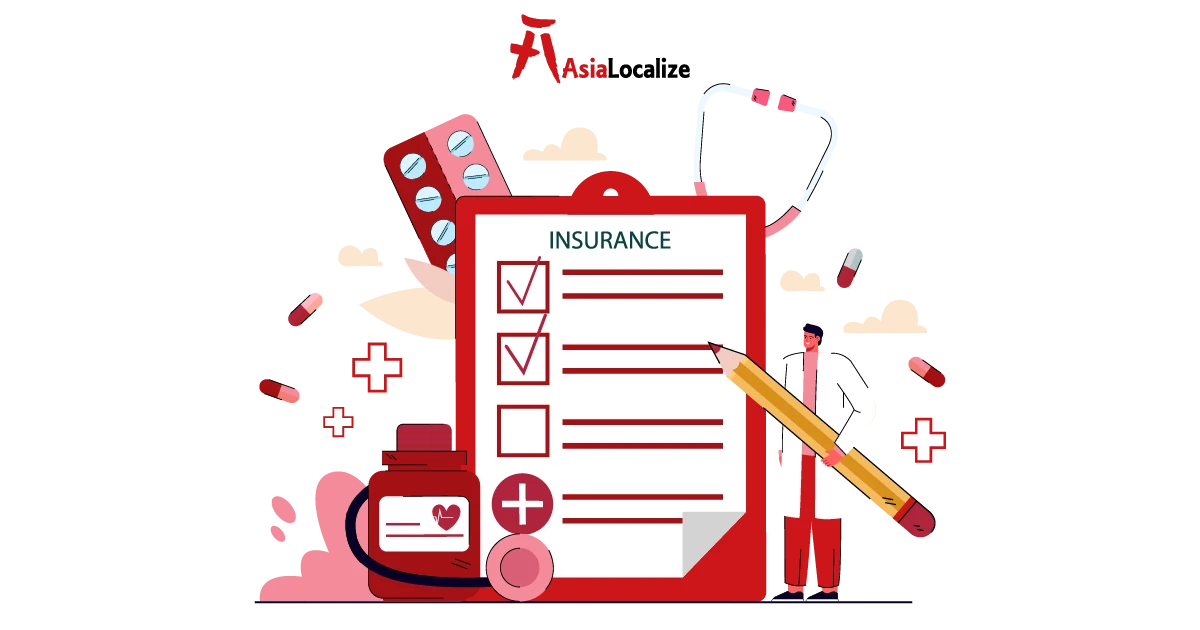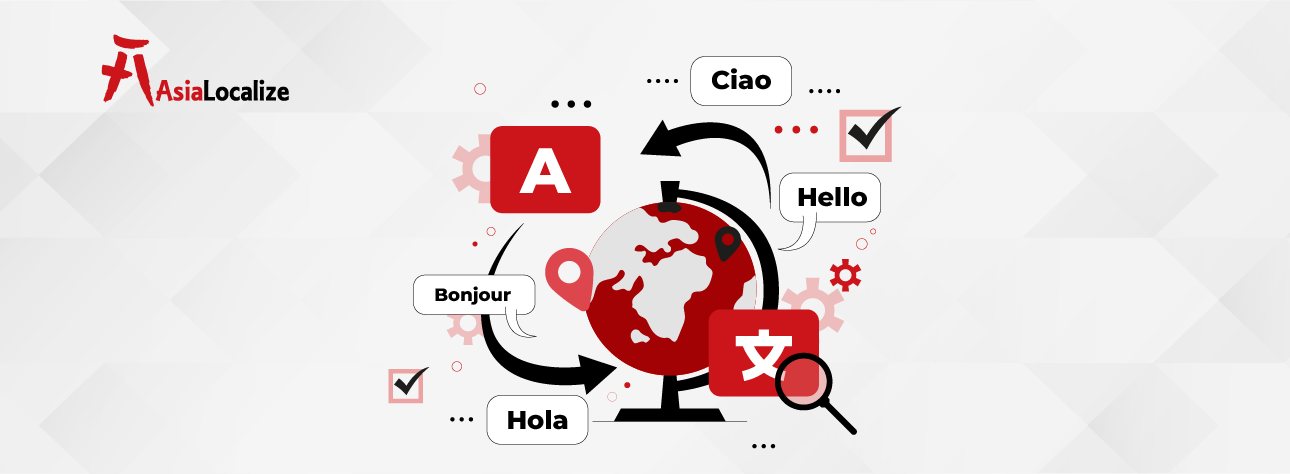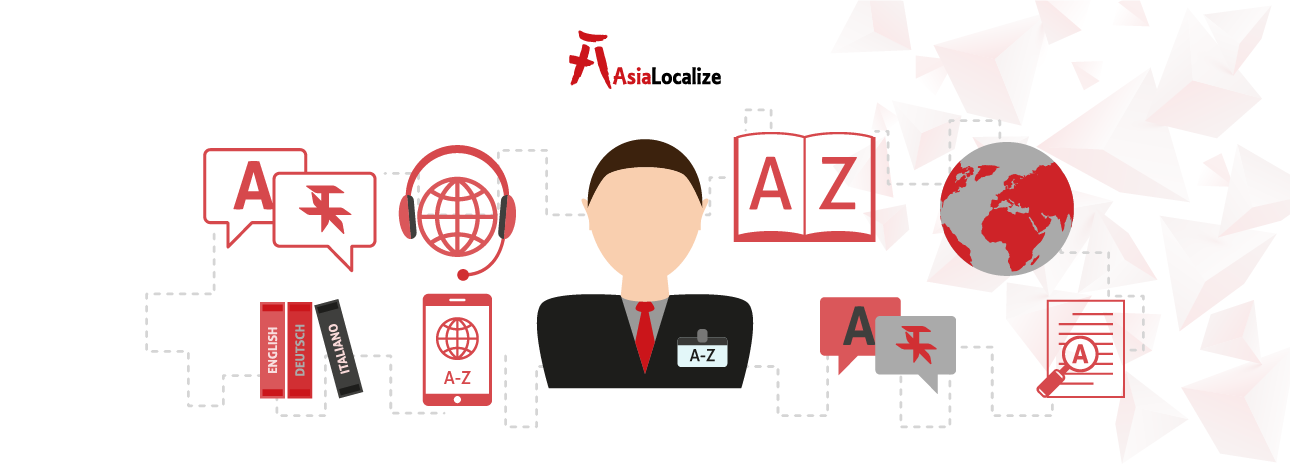Abbreviations are everywhere—on product labels, in technical manuals, and in internal reports. They’re a great way to save space and time, but when you’re communicating with a global audience, they can quickly become confusing. What makes perfect sense in one language might be unclear, misleading, or even inappropriate in another.
Most abbreviations come with little to no context. One acronym might have five different meanings, vary across industries, or not exist at all in another culture. That’s why translating abbreviations isn’t just about swapping letters; it’s about knowing what they stand for, why they matter, and how they’ll be understood in a new language.
At AsiaLocalize, we’ve seen how easily these small terms can cause big misunderstandings. That’s why we’ve put together this guide to help you master the art of translating and localizing abbreviations the right way.
Translating Abbreviations: Common Pitfalls
Every industry has its own language, and that often includes a maze of abbreviations that can be tricky to navigate.
In fields like IT and engineering, translating technical abbreviations requires precision. These shortened terms often refer to complex systems, processes, or tools, and getting them right is essential to maintain clarity and ensure seamless functionality across global teams.
In the medical field, the stakes are even higher. A misinterpreted abbreviation could lead to confusion in treatment plans, jeopardize patient safety, or result in regulatory violations.
And in the legal sector, even the smallest misstep in translating an acronym can cause major misunderstandings, misrepresent contractual terms, or lead to compliance issues across jurisdictions.
| Accuracy That Saves Lives—Learn More About Our Medical Translation Services. |
AsiaLocalize’s Approach to Translating Abbreviations
Steer Clear of Errors Before They Cost You Customers
At AsiaLocalize, we approach abbreviation translation with the perfect mix of expert insight, attention to detail, and advanced technology to ensure your message is precise, clear, and connects with audiences across the globe.
Our approach is built on five pillars:
Specialized Industry Expertise
We deploy linguists who are not only native speakers but also have extensive experience in your industry, whether it’s IT, medical, legal, engineering, or finance. This expertise ensures accurate interpretation of complex or ambiguous abbreviations that could otherwise lead to costly errors.
Comprehensive Contextual Review
We don’t translate abbreviations in isolation. Every term is analyzed within its full textual and cultural context to determine the intended meaning, usage, and potential ambiguities, enabling us to choose the most appropriate localized equivalent.
Cultural Sensitivity and Compliance
We work with a team of locally based translators who are not only experts in their respective industries but also deeply immersed in the target culture. This ensures that every translation respects local customs, cultural nuances, and regulatory requirements, helping you avoid misunderstandings and meet legal and professional standards worldwide.
Cutting-Edge Technology Integration
We combine the power of Computer-Assisted Translation (CAT) tools with advanced Natural Language Processing (NLP) technologies to streamline and improve abbreviation translation. CAT tools help maintain consistency and efficiency by leveraging customizable glossaries and translation memories, ensuring every acronym and abbreviation is translated uniformly across all materials. Meanwhile, natural language processing (NLP) in abbreviation translation analyzes context and disambiguates terms with multiple meanings, allowing us to deliver translations that are not only accurate but contextually precise and industry-appropriate.
Rigorous Quality Assurance and Collaboration
Every project undergoes a multi-layered quality control process involving expert reviews, client feedback loops, and final proofreading to ensure clarity, precision, and alignment with your goals. We work closely with your team to incorporate industry-specific insights and preferences.
| Make Your Message Speak Globally Learn More About Our Business Translation Services. |
8 Essential Strategies for Accurate Abbreviation Translation: Best Practices from Leading Language Service Providers
When it comes to translating abbreviations, professional translation companies follow a set of proven strategies designed to deliver precise, culturally appropriate, and contextually relevant results.
1. Research and Contextual Understanding
One of the most important steps in translating abbreviations accurately is conducting thorough research into the meaning and usage of abbreviations within specific industries or subject areas. Understanding the context is critical to selecting the correct translation and avoiding misinterpretations.
2. Client Collaboration
Maintaining open communication with clients is a priority. Translation providers seek to understand client-specific style guides, brand preferences, and terminology requirements to ensure consistency and alignment with corporate identity.
3. Use of Glossaries and Terminology Databases
Professional translators rely on specialized glossaries and terminology databases that include approved abbreviations and their translations. These resources help maintain consistency and accuracy across all projects.
4. Transference (Borrowing)
When abbreviations are internationally recognized or widely understood, translation companies may retain the original abbreviation to preserve familiarity and brand recognition.
5. Descriptive Translation (When No Equivalent Exists)
If the target language lacks an equivalent abbreviation, companies provide clear, descriptive translations that explain the meaning fully, ensuring the message is clear and unambiguous.
6. Replacement with Equivalent Abbreviation
Where possible, source abbreviations are replaced with their established equivalents in the target language, balancing brevity with clarity.
7. Hybrid Approach Using Multiple Methods
Many translation providers use a combination of methods, such as expanding abbreviations on first use, followed by the abbreviation itself, to optimize readability and comprehension.
8. Machine Translation Enhancement with Acronym Disambiguation
Translation companies often incorporate additional steps in machine translation workflows to identify, expand, and verify abbreviations and acronyms, improving accuracy over baseline systems by using agreement and verification methods.
How to Create an Abbreviation Translation Style Guide
Inconsistent abbreviation use is one of the most common issues we see in multilingual projects. One team spells it out, another uses the English acronym, and a third applies their own version, resulting in confusion, extra revisions, and an uneven brand voice.
To solve this, we work closely with our clients to create tailored abbreviation translation style guides—practical, data-driven references built from your own content, terminology, and workflows. By analyzing your materials and gathering input from key stakeholders, we develop a guide that aligns with your brand, industry, and regulatory needs, ensuring clarity and consistency from day one.
Here’s what we help our clients include in a well-rounded abbreviation style guide:
Approved Abbreviation List
A curated list of commonly used abbreviations, along with their full forms and approved translations or equivalents in the target languages.
Contextual Usage Rules
Guidance on when and where to use, expand, or explain abbreviations (e.g., on first use, once per page, or in headings only).
Formatting Preferences
Clear rules for capitalization, punctuation, parentheses, or bolding—so everything looks and reads consistently across documents.
Industry-Specific Guidance
Tailored notes for regulated fields like healthcare, legal, or finance, where abbreviation misuse can have serious consequences.
Localization and Cultural Notes
Advice on how to handle region-specific acronyms or abbreviations that may need adaptation or replacement in certain markets.
Translate or Transcribe?
Clear guidelines on which abbreviations should be translated into the target language, which should be kept in their original form, and when a full descriptive translation is needed to ensure clarity and accuracy.
Creating this kind of guide isn’t just helpful; it’s strategic. It saves time, reduces revisions, and ensures your brand communicates clearly and consistently in every language.
Need Professional Abbreviation Translation Services?
Trust AsiaLocalize to get every letter right—every time. From technical documents to multilingual marketing, we ensure your abbreviations are translated with care and consistency. Backed by ISO-certified workflows and deep subject-matter expertise.
| Let’s make your message clear—letter by letter. Learn More About Our Professional Translation Services. |


